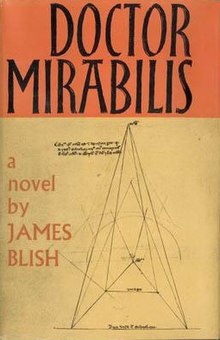
Ḥasan Ibn al-Haytham was a medieval mathematician, astronomer, and physicist of the Islamic Golden Age from present-day Iraq. Referred to as "the father of modern optics", he made significant contributions to the principles of optics and visual perception in particular. His most influential work is titled Kitāb al-Manāẓir, written during 1011–1021, which survived in a Latin edition. The works of Alhazen were frequently cited during the scientific revolution by Isaac Newton, Johannes Kepler, Christiaan Huygens, and Galileo Galilei.

James Benjamin Blish was an American science fiction and fantasy writer. He is best known for his Cities in Flight novels and his series of Star Trek novelizations written with his wife, J. A. Lawrence. His novel A Case of Conscience won the Hugo Award. He is credited with creating the term "gas giant" to refer to large planetary bodies.

Roger Bacon, also known by the scholastic accolade Doctor Mirabilis, was a medieval English philosopher and Franciscan friar who placed considerable emphasis on the study of nature through empiricism. In the early modern era, he was regarded as a wizard and particularly famed for the story of his mechanical or necromantic brazen head. He is sometimes credited as one of the earliest European advocates of the modern scientific method, along with his teacher Robert Grosseteste. Bacon applied the empirical method of Ibn al-Haytham (Alhazen) to observations in texts attributed to Aristotle. Bacon discovered the importance of empirical testing when the results he obtained were different from those that would have been predicted by Aristotle.

Ignatius Loyola Donnelly was an American Congressman, populist writer, and fringe scientist. He is known primarily now for his fringe theories concerning Atlantis, Catastrophism, and Shakespearean authorship. These works are widely regarded as examples of pseudoscience and pseudohistory. Donnelly's work corresponds to the writings of late-19th and early-20th century figures such as Helena Blavatsky, Rudolf Steiner, and James Churchward.
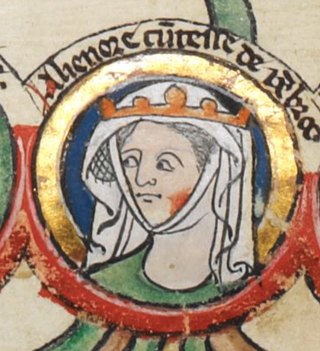
Eleanor of England was the youngest child of John, King of England and Isabella of Angoulême.
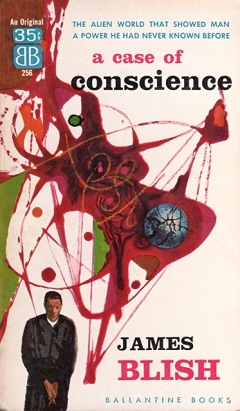
A Case of Conscience is a science fiction novel by American writer James Blish, first published in 1958. It is the story of a Jesuit who investigates an alien race that has no religion yet has a perfect, innate sense of morality, a situation which conflicts with Catholic teaching. The story was originally published as a novella in 1953, and later extended to novel-length, of which the first part is the original novella. The novel is the first part of Blish's thematic After Such Knowledge trilogy and was followed by Doctor Mirabilis and both Black Easter and The Day After Judgment.

New Atlantis is an incomplete utopian novel by Sir Francis Bacon, published posthumously in 1626. It appeared unheralded and tucked into the back of a longer work of natural history, Sylva Sylvarum. In New Atlantis, Bacon portrayed a vision of the future of human discovery and knowledge, expressing his aspirations and ideals for humankind. The novel depicts the creation of a utopian land where "generosity and enlightenment, dignity and splendour, piety and public spirit" are the commonly held qualities of the inhabitants of the mythical Bensalem. The plan and organisation of his ideal college, Salomon's House, envisioned the modern research university in both applied and pure sciences.

Optics began with the development of lenses by the ancient Egyptians and Mesopotamians, followed by theories on light and vision developed by ancient Greek philosophers, and the development of geometrical optics in the Greco-Roman world. The word optics is derived from the Greek term τα ὀπτικά meaning 'appearance, look'. Optics was significantly reformed by the developments in the medieval Islamic world, such as the beginnings of physical and physiological optics, and then significantly advanced in early modern Europe, where diffractive optics began. These earlier studies on optics are now known as "classical optics". The term "modern optics" refers to areas of optical research that largely developed in the 20th century, such as wave optics and quantum optics.
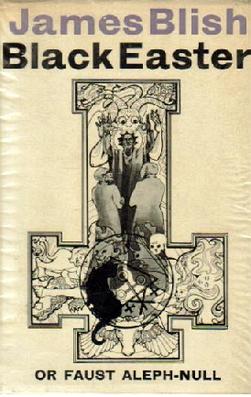
Black Easter is a fantasy novel by American writer James Blish, in which an arms dealer hires a black magician to unleash all the demons of Hell on Earth for a single day. The novel initially depicts the assassination of a Governor of California by a black magician working as a contract killer. The same magician is then hired to release every demon in Hell for a brief time period. However, the demons can not actually return to Hell by the end of the novel. Their traditional opponent, God, has already died and nobody else can compell them to return to Hell.
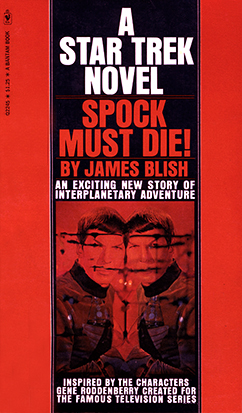
Spock Must Die! is an American science fiction novel written by James Blish, published February 1970 by Bantam Books. It was the first original novel based on the Star Trek television series intended for adult readers. It was preceded by a tie-in comic book line published by Gold Key and the novel Mission to Horatius by Mack Reynolds, all intended for younger readers.
This timeline of the history of the scientific method shows an overview of the development of the scientific method up to the present time. For a detailed account, see History of the scientific method.

The Baconian theory of Shakespearean authorship contends that Sir Francis Bacon, philosopher, essayist and scientist, wrote the plays, which are publicly attributed to William Shakespeare. Various explanations are offered for this alleged subterfuge, most commonly that Bacon's rise to high office might have been hindered if it became known that he wrote plays for the public stage. The plays are credited to Shakespeare, who, supporters of the theory claim, was merely a front to shield the identity of Bacon. All but a few academic Shakespeare scholars reject the arguments for Bacon authorship, as well as those for all other alternative authors.
There have been many attempts at defining science fiction. This is a list of definitions that have been offered by authors, editors, critics and fans over the years since science fiction became a genre. Definitions of related terms such as "science fantasy", "speculative fiction", and "fabulation" are included where they are intended as definitions of aspects of science fiction or because they illuminate related definitions—see e.g. Robert Scholes's definitions of "fabulation" and "structural fabulation" below. Some definitions of sub-types of science fiction are included, too; for example see David Ketterer's definition of "philosophically-oriented science fiction". In addition, some definitions are included that define, for example, a science fiction story, rather than science fiction itself, since these also illuminate an underlying definition of science fiction.

British philosophy refers to the philosophical tradition of the British people. "The native characteristics of British philosophy are these: common sense, dislike of complication, a strong preference for the concrete over the abstract and a certain awkward honesty of method in which an occasional pearl of poetry is embedded".

Note: In compliance with the accepted terminology used within the Shakespeare authorship question, this article uses the term "Stratfordian" to refer to the position that William Shakespeare of Stratford-upon-Avon was the primary author of the plays and poems traditionally attributed to him. The term "anti-Stratfordian" is used to refer to the theory that some other author, or authors, wrote the works.
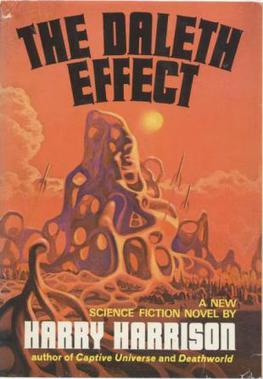
The Daleth Effect, also known as In Our Hands, the Stars, is a science fiction novel written by Harry Harrison and published in 1970.

European science in the Middle Ages comprised the study of nature, mathematics and natural philosophy in medieval Europe. Following the fall of the Western Roman Empire and the decline in knowledge of Greek, Christian Western Europe was cut off from an important source of ancient learning. Although a range of Christian clerics and scholars from Isidore and Bede to Jean Buridan and Nicole Oresme maintained the spirit of rational inquiry, Western Europe would see a period of scientific decline during the Early Middle Ages. However, by the time of the High Middle Ages, the region had rallied and was on its way to once more taking the lead in scientific discovery. Scholarship and scientific discoveries of the Late Middle Ages laid the groundwork for the Scientific Revolution of the Early Modern Period.
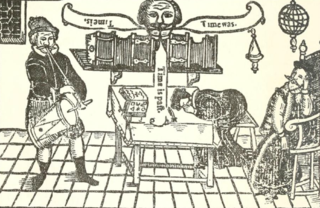
Thomas Bungay, also known as Thomas of Bungay and formerly also known as Friar Bongay, was an English Franciscan friar, scholar, and alchemist.
William Marshal, 1st Earl of Pembroke was an Anglo-Norman soldier and statesman. He served five English kings – Henry II, his sons the "Young King" Henry, Richard I, and John, and John's son Henry III.
